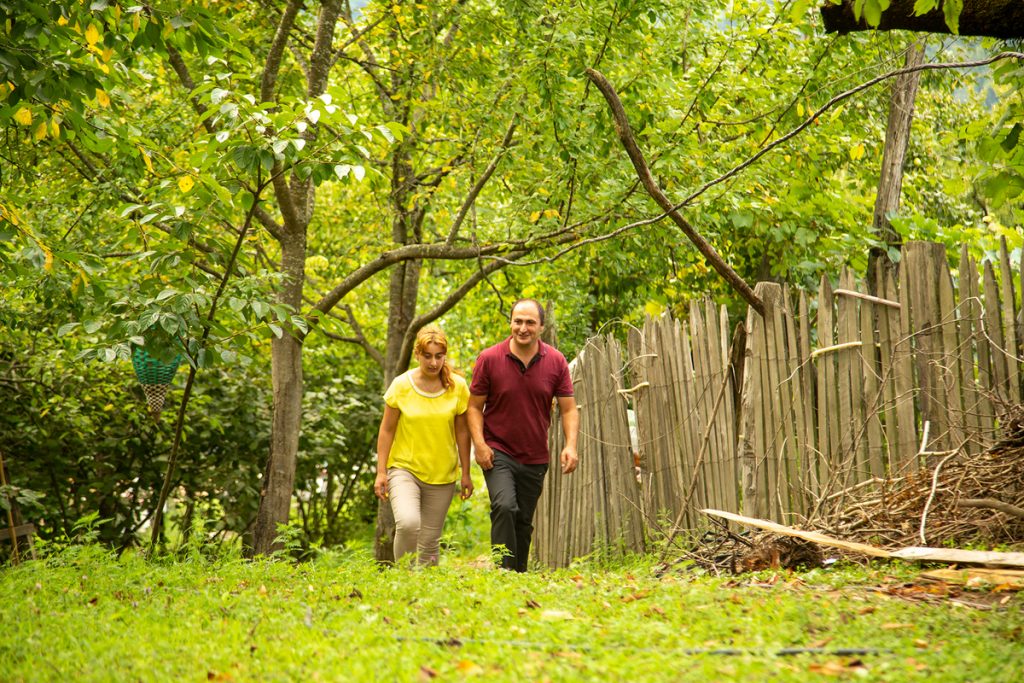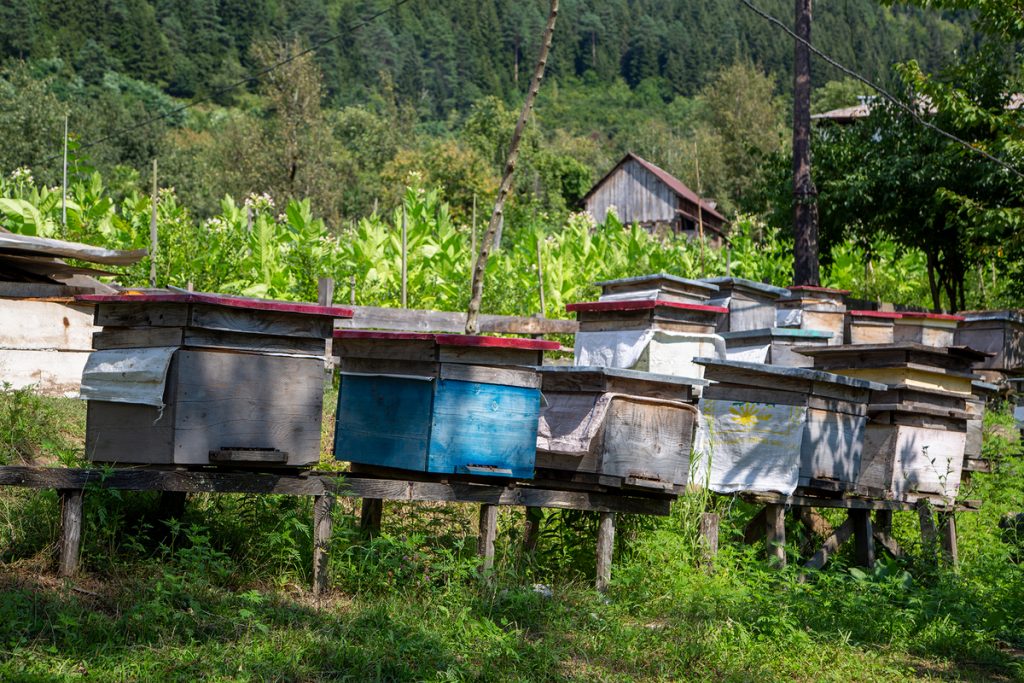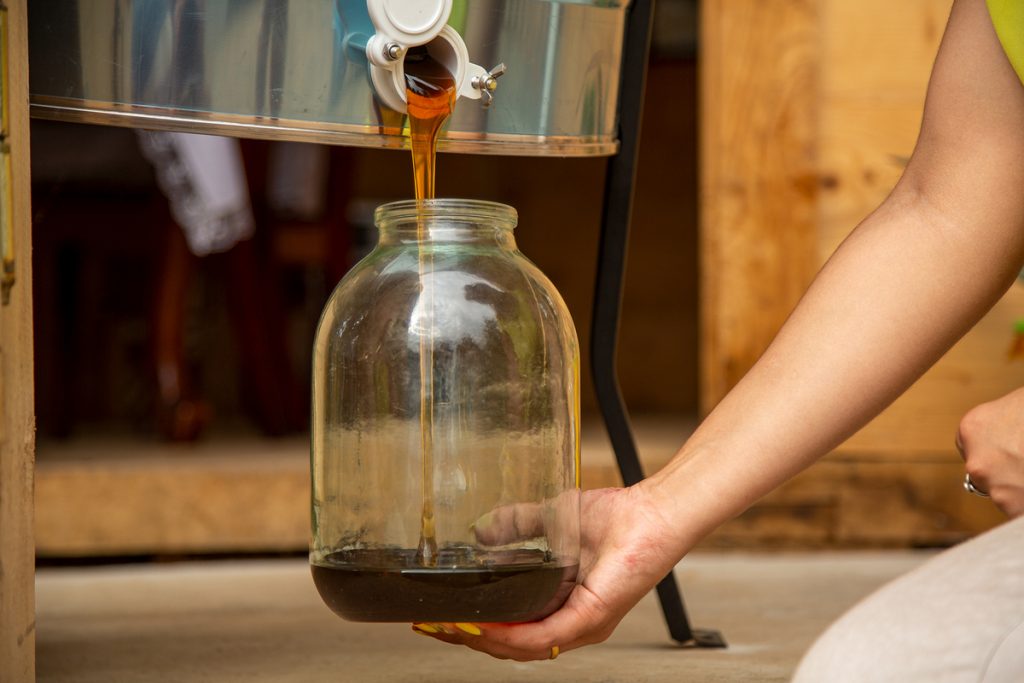
My Village: Keda women develop honey production
If ever visiting highland Adjara, you should choose the Municipality of Keda as your first destination. Apart from extraordinary landscapes and centuries-old architectural monuments, you would meet people working hard every day to create a better future. Owing to local product and crafts, Keda has been giving both local visitors and foreign tourists with unforgettable impressions for years.
Thanks to local natural conditions in Keda, the population can benefit from available resources, growing special varieties of grapes and engaging in beekeeping in addition to numerous other agricultural activities. Supported by the EU, the Keda LAG has offered local people a chance to participate in projects and start up small businesses. Lamzira Khinikadze has recently joined in.
According to Giorgi Abuladze, member of the KedaLAG, local civil society, private and public service officials united around a common purpose: “We have drafted a strategic development plan for the municipality, setting clear priorities. So now any activities have been prescheduled, but as this is a living document, we can update it if new challenges appear. The Keda LAG defines criteria for identifying needs, supporting promising projects and monitoring the approved ones.”
Lamzira’s project is among 46 initiatives supported by the LAG in Keda. Lamzira is from the village of Vaodana, where she and her family have been engaged in beekeeping for years. Her husband Robert Makhachadze told us beekeeping has been a family business for many decades, but instead of methods used by the ancestors, the family is now using modern technologies to manage the business effectively.
At this stage the family has about 70 bee colonies and produces chestnut, acacia, meadow and flower honey as well as honey and pine needle vodka. This year they have already harvested a ton of chestnut honey to sell throughout Georgia.
“Unfortunately, we could not export our honey abroad during the pandemic, so the project helped us pour the honey in jars of different sizes and label them with necessary information to increase customer trust. We think this would be a great advantage for exporting honey abroad in future,” Lamzira says.
Due to the favorable location, the family take their bees to citrus-growing villages in May and April, to produce citrus honey of unique aroma, as well as vodka, propolis and wax.
Some time ago, when the visitors’ inflow increased, the family came up with the idea to make the product manufacturing process transparent, for which they needed a specially allocated space. Lamzira wrote a project and applied for funding from the Keda LAG, which apart to the above-mentioned benefits allowed the family to put their ideas to practice. If you visited the village of Vaio today, you would not miss a fabulous wooden hut close the ski slopes and would be amazed by the scent of honey and pine inside and an opportunity to take part in the honey making process and theoretically and practically follow beekeeper’s steps for getting the final product.
“It is great to see people showing interest to beekeeping. Both foreign tourists and local visitors come to buy or taste honey, honey vodka, take part in the process of removing pine needles and filtering honey. They take photos and videos and upload these to social media, and as a result, more and more people learn about our little honey house, which promotes our business and makes us happy,’ says Robert.
According to Giorgi Abuladze, the project is beneficial for local community. Firstly, there are mainly wine cellars and guesthouses in Vaio, and the honey house idea promotes various economic activities in the village. Besides, Lamzira Khinikadze is setting an example for local women. ‘We believe that in addition to increasing Lamzira Khinikadze’s family income and creating additional jobs, the project also empowers local women. The work of LAG has motivated the local community. They see that Keda has a great potential and try to make the best use of local resources.” says Giorgi Abuladze.
Watch the story here:



